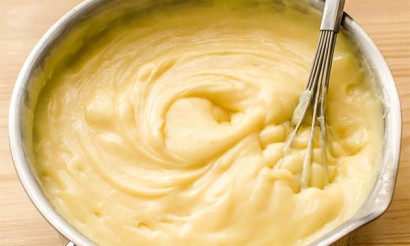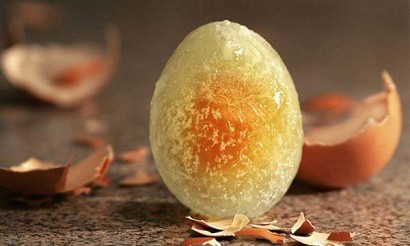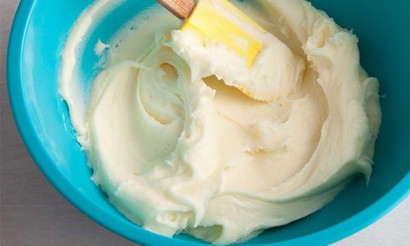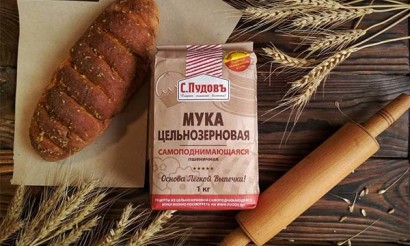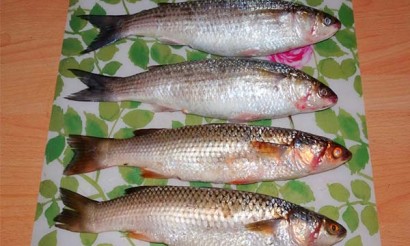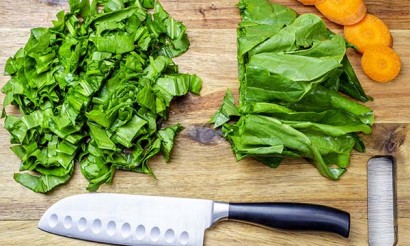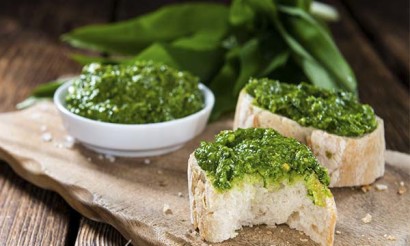At what age can I give a melon to my child
The sweet fruit is loved by many people. They look forward to the beginning of the season to enjoy this delicacy. Many parents are under the mistaken impression that the melon is a light product that can be safely given to children. But this belief is far from the truth.
Of course, the melon can be classified as a healthy food. It contains many vitamins, minerals, acids, which actively participate in all processes of the body and have a beneficial effect on its work. But this happens only when the norm of consumption of this product is observed. Therefore, the question of whether to give your baby a melon, it is better to decide together with your pediatrician, adhering to the recommendations.
Most experts advise to postpone the first acquaintance with melon culture until the baby is 1 year old. There is an opinion that it is better to wait until the age of 2 or 3 years, when the digestive and immune systems finish their formation and will be able to react adequately to this product.
Even the adult body sometimes finds it difficult to absorb melon completely and without problems. It is worth remembering that the child's body is still in a state of development, he does not need unnecessary stress.
In addition, parents need to pay attention to the choice of product. Poor quality products containing nitrates, just cause harm. Then you have to deal with the consequences.
Simple adherence to the recommendations, attentiveness when buying, moderation in consumption will allow you to get the maximum benefit and avoid the negative factors.
What are the benefits of melon for children
Melon has a unique composition. Eating this product in limited quantities can benefit the child's body.
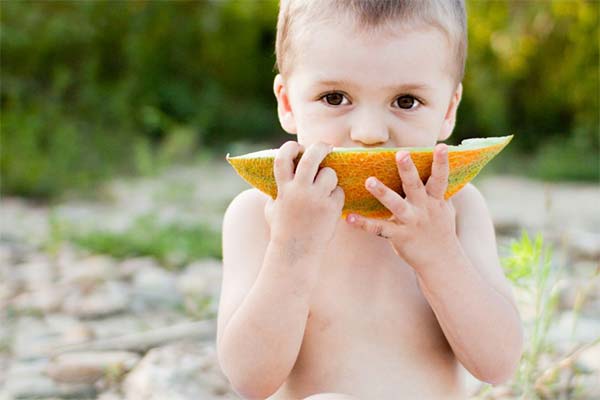
- This melon crop contains a lot of vitamin A and beta-carotene. This is very important for the growing and developing body. Also, eating melon will have a positive effect on eyesight.
- Vitamin C is essential for the normal functioning of the immune system. At a child's age, the immune system is actively developing, it needs strengthening. Without ascorbic acid can not do.
- The group of vitamins B and PP are necessary for normal functioning of the heart, blood vessels, nervous system. At a child's age, it is important because the emotional state is still unstable. Magnesium, which is also part of the melon, helps to quickly calm down and be less painful in stressful situations.
- Nicotinic acid plays an important role in metabolic processes. During active growth, the child just needs a stable metabolism that ensures the normal absorption of all elements.
- Pectin, contained in the melon crop, helps to remove toxins and other harmful substances from the child's body.
- The high fiber content helps intestinal peristalsis and has a slightly laxative effect.
- The potassium contained in melon also has a beneficial effect on the cardiovascular system.
- In addition, the melon allows you to be full, since it has a lot of sugars, which are quickly digested.
So, the consumption of aromatic fruit helps to strengthen the immune system. The substances that it contains are involved in the process of hematopoiesis, so the melon prevents the development of iron deficiency. The fruit speeds up the metabolism, gives energy and improves the mood. Moderate consumption of melon has a good effect on health and the normal functioning of all its systems.
Harm and contraindications
Despite all the useful properties of melon, it has a number of serious contraindications, which can not be ignored when it comes to the nutrition of the child.
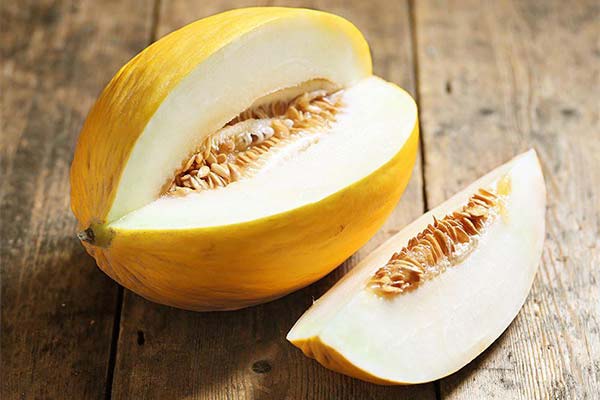
- Parents need to remember that the melon refers to products that can cause an allergic reaction. In the first place, you need to be careful for those who have a family history of allergies to certain products. This disease is inherited, but you can't be sure what the reaction will be to, maybe to the melon. It is also worth postponing the first introduction to melon crops for those parents whose child is already allergic to other types of products. In this case, the risk of allergy increases many times over.
- It is dangerous for the child's body to exceed the daily norm of this product. Melon is hard to digest, even for adults, and a child's unprepared digestive system can fail. This is fraught with the occurrence of vomiting, diarrhea, severe flatulence.
- Also, melon should not be combined with other foods. This slows down the process of its digestion, which can also cause a child to feel unwell.
- It is strictly forbidden to eat melon for people, especially children with diabetes. The product contains a lot of sugars, which are quickly digested by the body, leading to a rapid rise in blood glucose levels.
- If the child has kidney disease, the question of introducing melon into the diet is decided only with the attending physician. The fruit has a pronounced diuretic effect, which increases the load on the kidneys.
- Also from melon should be refused if the child has diseases of the gastrointestinal tract, or include it in the diet only on the recommendation of the attending physician.
If you adhere to the basic rules and prescriptions of the pediatrician, you can minimize the negative effects. Then the melon will bring only benefits to the children's body.
What kind of melons to feed kids
If there are no contraindications to the consumption of melon by a child, his body tolerated well the first acquaintance with this melon crop, then you can gradually include it in the diet. It is worth adhering to the recommendations of a specialist and understand that this product is not as simple as it may seem. Therefore, it is necessary to choose the right fruit, which will bring only benefits and no harm.
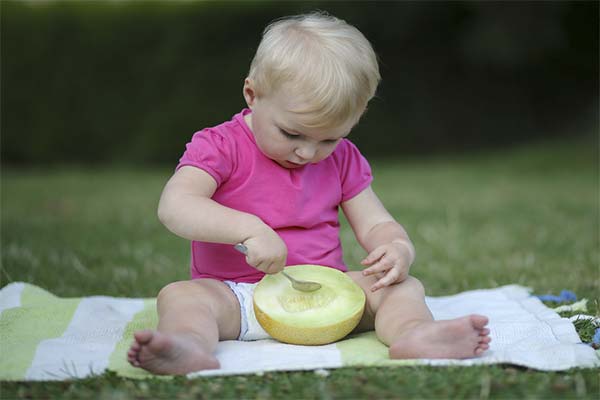
Among the varieties, it is better to give preference to "Kolhoznitsa" and "Torpedo". They are more often and can be found on sale. It is worth noting that these varieties are grown in Russia, so there is a good chance that they were taken already ripe, they did not lie long during transport. It is better to buy in places that have proven themselves, have quality certificates for products and work directly with producers, not resellers.
"Kolhoznitsa" has a small size and spherical shape. The skin is very thin and soft. The flesh is white, loose and tender, quite juicy. It will be easier for a child to handle such a product. "Torpedo" is more often imported from the countries of Central Asia. The product is often taken from the melon not yet ripe, so it does not spoil on the road. The quality is also affected by transportation and storage conditions.
Remember that the sweet flesh of the melon is a breeding ground for microorganisms. Therefore, a fruit that has not matured in the field and has been stored for a long time can be dangerous for the baby. His digestive system is not yet able to withstand such negative factors, which may cause food poisoning. Therefore, when choosing a Central Asian variety, you should be more careful, pay attention to the quality of the product, buy from a proven seller, where all the information about the product is known. "Torpedo" has an elongated shape, much larger than "Kolhoznitsa", the skin is tougher, drier with prominent veins on the surface. The color of the skin is less intense than in the first variety, light yellow. Sometimes "Torpedo" is also called the white melon. The flesh is dense but juicy, sweet, and has a distinct melon flavor. It is quite difficult for a child from one to two years old to cope with it, so you need to cut it into thin little slices or make a puree.
Parents need to know that the melon must be ripe. Not yet badly matured fruit or the one that is overripe is not suitable. Both options are fraught with negative consequences. Not ripe melon is very difficult to digest not only for children, but also for adults. This can cause the onset of diarrhea. And overripe fruit may already contain microorganisms, provoking poisoning. It is better to buy a melon that has matured well in the field and was on sale the same day it was picked. Therefore, parents should consider buying directly from the grower. Many farmers today sell directly from the field during the melon-picking season.
It is also not recommended to give a child a melon that has been cut without refrigeration for more than 2 hours or in a refrigerator for more than a day. During this time, bacteria dangerous to the gastrointestinal tract may begin to develop in the pulp. The baby is given only the melon that has just been cut. Therefore, it is worth refusing to buy a product in the store, from which a piece was cut for a sample. Today, for the convenience of the buyer many retail outlets are already pre-cut the fruit into slices and pieces. Such a product should not be given to children.
Before using the melon, be sure to wash it under running water, preferably with soap, then give the skin a boiling water. Then remove all seeds, cut into small pieces or thin slices. It is better to cut the skin right away, so that the child does not accidentally bite a piece and do not choke. In addition, the flesh next to the skin can contain harmful substances such as nitrates.
How to choose a delicious melon for a child
So, the guarantee of the safety of melon for a child is the right choice of product in the store. The first thing parents should do is choose a safe seller. The best option is that outlet, where you can get complete information about the product, where it grew, when it was taken off the field, and storage conditions. In addition, this information should be confirmed by quality certificates. If there are farmers growing melons in the area, you can consider buying directly from the field. Today, many of them are introducing this practice during the season. Here you can find out how the fruits are grown, what technology is used, whether nitrates are used. In addition, you can be sure of the freshness of the product. Sometimes producers offer to cut the fruits themselves directly from the melon.
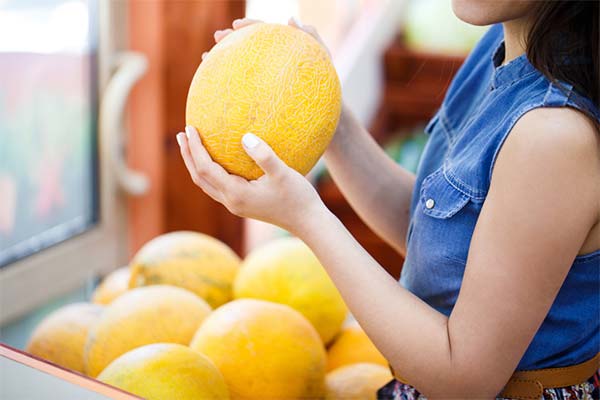
Parents need to be careful when buying melons. This fruit is already quite difficult for the digestive system to digest, in addition, in its sweet flesh quickly breeds pathogenic microflora. This is why the ripeness and freshness of the product play such an important role.
In order not to buy a fruit that has been grown with a lot of fertilizers, it is necessary to choose melon only in season. Those that are in stores during the year may contain harmful substances. In addition, such goods are brought from abroad, taken while still green, and spend a long time in containers, where they are subjected to mechanical stress. Also, such fruits are often treated with special agents to extend the shelf life and implementation. It is better not to hurry and wait until the melons ripen on their own in the field in the vicinity of the points of sale. The season begins in August and lasts until October. Do not believe the sellers, who try to sell the goods earlier, citing the hot summer and early harvest. The child's health is better not to risk.
If the seller does not raise any concerns, there is confirmation of the safety of the product, you can proceed with the selection. You should buy melons that have an evenly colored surface. There should be no spots on the skin, dark, light, green and any other inclusions, dents, damages. The fruit should be fairly dense, but not hard as a rock. The ripe product emits a strong, pleasant, sweet aroma. You need to pay attention to the tail, it should be dry. Green and damp tail, with signs of being cut with a knife, indicates that the melon was taken off green and it has ripened already in the place of storage or sale. Such a product cannot be considered quality. This fruit is not suitable for a child. A ripe melon's tail dries out while still in the field, so it can be removed from the bush without any problems.
After purchase, do not store the melon for a long time. It is better to wash, cut and eat immediately. The main thing is to stick to the norm and not to give your child more than allowed.
How to identify nitrates in the fruit
When buying a melon, remember that it can absorb all harmful substances from the soil. If a lot of fertilizers and preparations that accelerate growth and ripening were used during its cultivation, it may contain nitrates. This poses a great danger not only to children's bodies, but also to those of adults. Unfortunately, you can determine the presence of nitrates only after examining the pulp.
- The first thing to do is to pay attention to the seeds. In fruits containing nitrates, the fibers between the seeds will have a grayish tint. In a safe fruit, they are the same color as the pulp, they may be a slightly saturated hue. If there are a lot of empty seeds, this also indirectly indicates the possible content of harmful substances. Empty seeds indicate the product has not yet matured, or special preparations were used to speed up growth.
- The flesh near the skin is also taken into consideration. If you can clearly see a yellow stripe near the rind, there are nitrates in the melon. They accumulate near the rind.
- The veins in the pulp of a safe fruit are almost indistinguishable. They are the same color as the pulp. If they are clearly visible, they are contrasting, this can also indicate the presence of nitrates.
If the purchased product raises doubts, you should not experiment. It is better to throw it away. And do not forget that the melons, bought out of season, are likely to contain nitrates.
At what age can you feed your child melons?
Parents should follow the basic recommendations of pediatricians on feeding the child. There are tables of entering certain products into the baby's diet. Many parents are confused by manufacturers of baby food. They often use melon as a flavoring for porridges and purees, which creates a false impression of this product. A pleasant melon flavor is liked by almost all people, so a child is happy to eat such products. This does not mean that melon is absolutely safe and can be safely included in the diet.
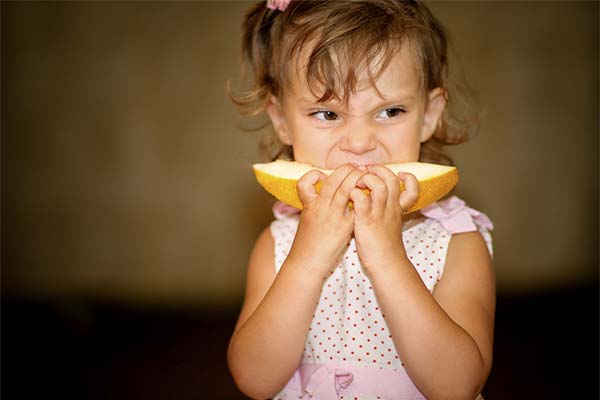
The general recommendation of pediatricians is that the first melon can be given to a child not earlier than 1 year. Even in this case, you should not hurry. At this time, the child is still forming the digestive system. He can already eat a fairly wide range of products, but his gastrointestinal tract is still not releasing enough enzymes to process any food.
Parents need to remember that the melon is a difficult product to digest. It is not recommended to eat it with the main meal. The fruit can be used as a snack between meals, consumption on an empty stomach is also not recommended. Not every child's body is able to cope with such a product, even at the age of 1 year. Many pediatricians advise waiting another six months or a year, when the digestive system is stronger.
So, the more appropriate age for introducing the first consumption of melon is 1.5-2 years. At first, you should give a small piece and watch the reaction to the eaten product. If within a day there was no allergic rash, diarrhea, vomiting, you can leave the fruit in the diet as a sweet snack. The daily dose should not exceed 50 grams. Increase it gradually.
If the first use of melon gave a negative reaction, you should not immediately cross out this fruit forever. You can try again after 2 weeks. Perhaps the body just reacted sharply to an unfamiliar product, after a while everything can go more safely. If the situation repeats, it is worth postponing the experiments until the child is 3 years old, then the experience may be more successful.
Some experts advise not to rush with the introduction of melon and to wait until the child is 3 years old. By this time, the digestive system is finished forming. The baby's diet includes quite a variety of products.
How often to give and in what quantity
If the first acquaintance with melon culture was successful, did not cause negative consequences, you can gradually introduce it into the diet. It is worth remembering that the melon, even adults, is not recommended to eat with other products, especially dairy. You should not make smoothies, cocktails, salads, assortments with the addition of milk, yogurt and kefir. Also a bad combination is melon with honey. The fruit can not be eaten on an empty stomach. Therefore, the product is recommended to use as a snack, 1.5-2 hours after a meal.

Also, you should not get carried away with this treat. Most likely, the child will really like the melon. It is sweet and fragrant. It is rare to meet a child who does not like this fruit. But, it is necessary to strictly limit its amount. Overeating can provoke a malfunction in the digestive system, causing vomiting and diarrhea.
The first time everything is limited to just a small piece, no more than 20 g. If acquaintance was successful, the daily dose increases. At the age of 1 to 2 years, it is 50-100 g. From 3 years old, you can gradually increase the amount to 200 g. Preschooler can eat a day not more than 300 g of product. Small deviations are not critical, but it is worth adhering to the recommended rate.
This does not mean that a melon should be eaten every day. It is better if the diet is varied. Constant use of the same product can cause hives, since substances can accumulate in the body. Do not forget that the melon is good in season, at other times of the year it is better to give it up, finding an alternative.
What to do if an allergy occurs
Symptoms of an allergic reaction to melon are the same as in other types of digestive allergies.
- Skin rashes, redness, the appearance of hives, blisters, severe itching.
- Gastrointestinal reactions - nausea, vomiting, diarrhea, increased gas, colic.
- Nasal congestion, sore throat, cough, and tears from the eyes.
- Headaches and dizziness.
- In severe forms, swelling of the lips, throat, face, and Quincke's edema.
With mild symptoms, which manifested themselves in the form of small hives, it is necessary to exclude for a time melon from the diet, as well as other products that can cause an allergic reaction. Within a day, give more water to drink to quickly flush the substances out of the body. To avoid a repetition of such a reaction, postpone food experiments for a while.
If serious symptoms are found, it is necessary to see a doctor. The therapist will refer you to an allergist, who will investigate and prescribe treatment. Of course, melon is excluded from the diet.
If the child became dizzy, began to swell lips, face, especially the throat, be sure to call an ambulance. To exclude further aggravation of the situation, you can give an antihistamine, adhering to the instructions on the package. Children are usually prescribed Claritin and Zyrtec. They have virtually no side effects.
If a child has a strong allergic reaction, you should not self-medicate, it is better to consult a doctor.
«Important: All information on this site is provided solely for introductory purposes. Before applying any recommendations, you should consult with a specialized specialist. Neither the editors nor the authors shall be liable for any possible harm caused by materials."

